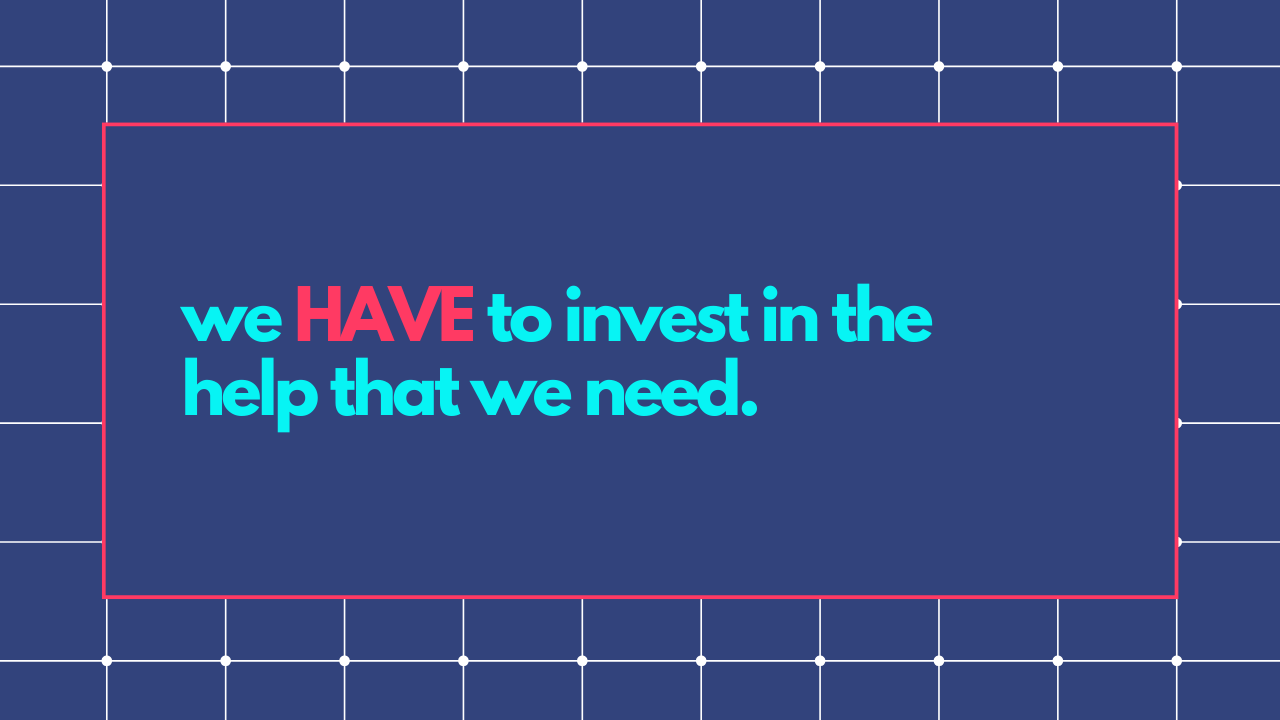To all my managers and business owners out there: have you ever felt like you’re stuck in a rut?
Let me rephrase: have you ever felt like things are moving a lot slower than they need to, or some tasks are more frustrating than they need to be, or that you’re completely overwhelmed?
This is something that all of us go through from time to time as a manager or a business owner. And while it’s okay and totally understandable, the problem is that we are there to keep the whole ship afloat. We’re there to keep the train moving. And when we’re stuck in a rut, if we don’t deal with it in a timely manner, we’re going to start potentially sending signals to our team members that the business isn’t on track, that team goals aren’t going to be met, and that we’re not in a good place.
This is why we can’t put our heads down and ignore it. We want to get to the bottom of what is causing us to feel stuck in a rut and address it right away because we have a responsibility to our team members to be a present leader.
We don’t have to fake it and say everything’s fine all the time, but as a leader, we have a responsibility to self-manage and figure out our own stuff so that we can put our best face forward.
As they say in Spider-Man, with great power comes great responsibility. So it’s our responsibility to get ourselves out of being stuck in a rut. But the first step to doing that is realizing that you are stuck in a rut.
Listen on Apple | Listen on Google | Listen on Spotify
Recognizing the Rut
So, what does it feel like to be stuck in a rut?
In the past, when I was managing a team, I felt like I wasn’t getting all the support that I needed from my own management chain.
I felt like I had so much work to do. I managed and coached my team members and made sure they were all in the right place. I also had a full set of work as an individual contributor. There was a lot on my plate.
This happens a lot in corporate. People end up working within a player-coach model, and we’re really doing two jobs at once.
Or, even if that’s not typical, maybe you have a team member that’s struggling or you’re short a team member, so you have to do a lot more heavy lifting.
When I was in this situation, I was so stressed that I actually ended up seeking out a role outside of management, because I said, “Hey, if I’m not going to get the support I need to do this, then I’m not going to do it.”
However, that wasn’t necessarily the best move for me, because I liked being a manager. I was good at it. I loved helping people achieve their goals. I loved developing them and helping them show up at their best.
So despite the fact that it was stressing me out so badly, it was a loss to take a step back from being a manager. But it was all I could think to do; I hadn’t figured out the stuff that was actually making me feel like I was stuck in a rut yet. I didn’t have other solutions. I hadn’t gotten the support I needed, so I took the only step I could think to take.
Sometimes, when we’re feeling trapped and stuck in a rut, our flight response kicks in. We just want to get out of that situation. And sometimes getting out helps us, but sometimes it doesn’t.
Even as a business owner, it’s perfectly normal to feel the urge to cut and run. But if you have invested years and time and money and all of your passion into this business, then cutting your losses and closing shop or attempting to pivot the whole business in a different direction might not be the right decision to make.
And even if it ends up being the right one, we definitely don’t want to make that choice in a moment when we’re running away from something. It’s always better to be running towards something than away.
So before we decide whether we like managing, whether we like leading a team or company, and whether we might want to start seeking a new role, we have to get ourselves out of being stuck in a rut.
Once we’re unstuck, we’ll be in a place where we can answer those questions without burnout answering them for us. But we have to get unstuck first.
Getting Unstuck
Getting unstuck is my favorite topic. “Unstuck” is even the name of my book!
When you’re stuck in a rut, the first thing to do is identify what’s really going on. You want to figure out, “Am I overwhelmed? Am I bored? Am I frustrated? Am I feeling like I don’t have the support I need? Am I worried about money? Am I not getting the things I need out of my team?”
Figuring out what dug the ditch is going to help you figure out what path to take to get out.
For instance, if you’re feeling bored or stagnant, that signals that you need more challenging work.
You need to be focusing your time in a different way. You need to be investing energy in some creative projects or taking on tasks that stretch your skills to full capacity.
On the other hand, if you’re feeling overwhelmed or burned out and that’s what’s keeping you stuck in a rut, then you need a very different solution. Taking on more will only dig that rut deeper.
It could even be something as simple as not taking enough time away from work. A lot of us put our teams and our businesses in front of ourselves, and before we know it, we haven’t exercised in six months. We haven’t eaten lunch away from our desk. We’re getting takeout every night because we can’t step away from work to cook, or because we’re so exhausted from the day we can’t muster up the energy. Maybe we’ve even been working so much that we didn’t have time to get groceries.
Any of those things could leave us feeling stuck in a rut like we can’t escape work no matter where we are. And when we’re in that space, again, we may start to make decisions rashly just to get ourselves out of it as fast as we can.

Some Potential Solutions
Once you’ve identified what’s causing the stuck-in-a-rut feeling, then we can start figuring out what we want to do about it.
The most common reason we get stuck in a rut is that I see is that we as managers and business owners put everything else in front of ourselves. We put the team, the business, and everything else first, and we don’t invest a lot of energy in ourselves.
One big shift you can make in this situation is to carve out time for yourself every single day and decide in advance what you’ll do with it.
Make a list of what you would do with fifteen minutes that allows you to invest energy in yourself. Not checking emails, not work stuff—something fulfilling for you personally.
It could be taking a walk. It could be listening to music or a podcast. It could be reading a few pages of a book every day. It could be meditation or breathwork. It doesn’t matter as long as it’s something you really like to do that will make you feel recharged.
I say to start with fifteen minutes because sometimes, that’s all we have. We’re busy people. But even that much will make a huge difference.
I encourage you to take those fifteen minutes at the start of your day, and then try to squeeze in another fifteen at the end of your day if you can. This will help bookend your day with the knowledge that you made time for yourself.
Even if the kids go to bed late and you literally only have ten minutes, do ten minutes. If you have five, do five. But when we’re stuck in a rut, we have to remind ourselves that we are accountable for some of our time. We have to know that other people can’t take all of our time. And when we get some of that back, we can re-energize ourselves going into the next day.
However, sometimes when we’re stuck in a rut due to overworking and burnout, we need more than just a shift in our own priorities—sometimes, we need help from others.
We have to invest in the help that we need. For example, I worked with a business owner once who felt really, really overwhelmed, to the point that she stayed up all night worrying about the team and the business.
The team was short-staffed. People were pinch-hitting for each other, but the work wasn’t getting done in the right way. In the end, it became obvious that there was a role missing.
She needed an office manager. But after identifying that need, her first fear was, “I can’t hire another team member. I’m already worried about money. I don’t think I can do that.”
But as we took a closer look at what an office manager’s work looked like, who was currently performing those duties on her team, and what tasks were slipping through the cracks, the need became incredibly clear.
So finally she made the decision to hire. We mapped out all the different tasks that needed doing in the business and identified what we needed in a candidate.
We needed someone who was proactive. Someone that saw a problem and looked at the bigger picture. Someone who didn’t just solve that one thing, but looked at it as a system. We needed someone that was going to be able to operate with very little direction because the business owner didn’t have time to babysit.
So we painted the picture of the ideal candidate. created the job description, and then she started looking for folks.
Because she had all of that clarity, she was able to find someone that was beyond the dream candidate. Within the first week, the new office manager had mapped out all these different opportunities for the business, started talking with the other employees, and started getting to know people.
She went so above and beyond that this business owner could finally sleep through the night, which she hadn’t done in almost five years. And she told me, “I wish I invested in this hire so much sooner instead of feeling stuck in a rut for so long.”
When you invest in the help you need, it will give you a fresh start to fully apply your skills and knowledge in a whole different place. It’s one of the fastest solutions to no longer feeling like you’re stuck in a rut.
That might look like hiring another team member. It might look like getting a coach. It might look like hiring someone to help figure out your ops and streamline everything there with an ops playbook, which…hi! I’m happy to help if that’s what you need.
It might look like a number of things. But again, the first task is to identify what got you stuck in a rut in the first place, so that you solve the problem the right way. And if you need help with that step, please reach out!
WORK WITH LIA:
Want a checklist of things you can do THIS month to become a better manager? Check out my Thriving Team Scorecard for a list of quick actions you can take right away with your team: liagarvin.com/scorecard
Book a FREE scaling strategy consultation with yours truly: calendly.com/liagarvin/scaleup-strategy?back=1&month=2023-08
Join the MANAGING MADE SIMPLE HUB, a membership community for team leaders and small business owners. This is your one-stop shop for building effective, motivated, & profitable teams: https://www.liagarvin.com/hub
CONNECT WITH LIA:
Website: https://www.liagarvin.com/
Instagram: https://www.instagram.com/lia.garvin/




